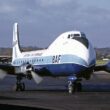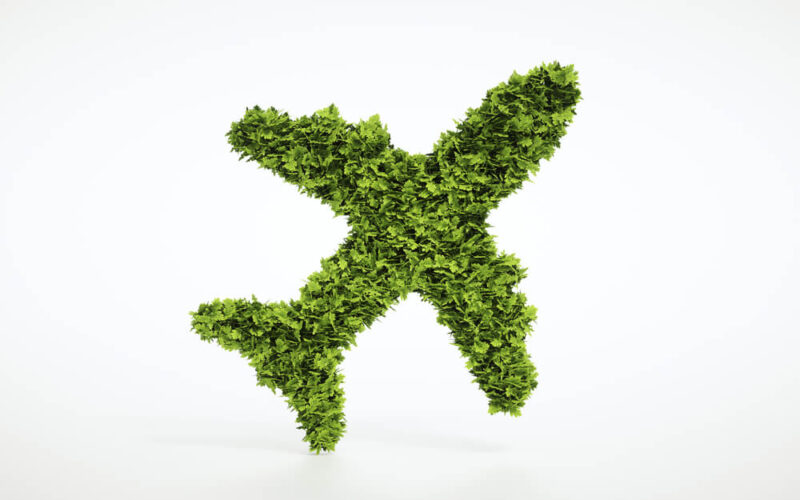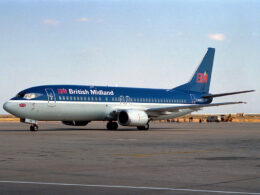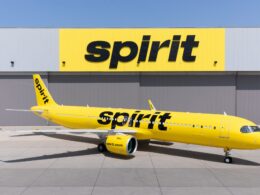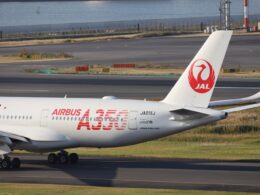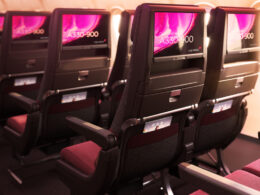Sustainability is seemingly becoming the name of the consumption game. Businesses are moving towards more sustainable practices in order to reduce their emissions and, to simply put, save our planet from the brink of disaster. Airlines are no exception. Presumably against industry executives’ best wishes, the spotlight was put on aviation to reduce its output of greenhouse gasses.
Starting from the flight shaming (#flygskam) movement, governments stomping their foot down, to protestors taking extreme action, the spotlight never faded despite the COVID-19 pandemic essentially crippling the sector. Protestors invaded runways and glued themselves to aircraft as recently as June 2020.
Lawmakers were also mindful of the environmental consequences of air travel when they gave out state-guaranteed loans or state aid packages, attaching strings to the respective deals. While the emission output plummeted, as did so the demand for air travel, airline executives expect 2019 levels of passenger demand to return sooner rather than later. Optimistic predictions range from 2022 to 2023, while pessimists indicate that that could be as late as 2025.
Despite the fact that airlines might only be getting back on their feet in 2021, the United Nations’ agency, International Civil Aviation Organization (ICAO) announced that Carbon Offsetting and Reduction Scheme for International Aviation (CORSIA) will enter its pilot phase in 2021.
The goal of the industry, as laid out by the International Air Transport Association (IATA), is to reduce the net emissions to half 2005 levels by 2050.
Offsetting or reducing?
The way that CORSIA works is that airlines would offset their emissions by “financing a reduction in emissions elsewhere,” reads IATA’s fact sheet about the initiative. Greenhouse gas reduction or removal must be something that is additional to an airline’s usual business and must reduce emissions permanently, not something that could be reversed.
In its purest form, CORSIA is not about the reduction of CO2 emissions, but rather making sure that aviation can grow and not be scrutinized for its pollution.
“CORSIA is a vital step in that direction, enabling carbon-neutral growth that will stabilize net emissions from international aviation at 2019 levels (580 million tonnes of carbon),” stated IATA on July 1, 2020. The association, together with ICAO, agreed to keep the baseline at 2019-levels, as the coronavirus pandemic swept aviation off its feet. Due to the reduced traffic, CO2 emissions were also reduced.
“Today’s decision to remove 2020 from the baseline calculation marks a pragmatic way forward that maintains the intent, spirit and impact of the CORSIA agreement,” highlighted IATA’s Director General and CEO Alexandre de Juniac. Sustainability is an airline’s license to grow, added de Juniac.
The offsetting and reduction scheme would only be applicable to those airlines, whose home countries agreed to participate in CORSIA. From 2027, however, all international flights will have to be offset. Domestic flying is exempt from the scheme.
But governments, particularly in Europe, are trying to actually reduce emissions on short-haul flying as well.
Choo choo alternatives
With the current crisis slashing airline revenues left and right, airlines became vulnerable to collapse, as bills still had to be paid. Governments, realizing that air travel is still vital to the wellbeing of a country, were not reluctant to help out carriers bolster their cash reserves. State-guaranteed loans or aid packages, while were different in their amount, had a fair amount of emphasis on the environment, especially in Europe.
For one, Austria wants to introduce anti-dumping policies on flights to and from the country. As the Alpine country reshaped its taxes on flights, homogenizing the tax at $13.50 (€12), Austria also wants to introduce legislation so that companies would not be able to sell tickets below the sum of taxes. However, flights that are under 350 kilometers (217 miles) will be taxed at $33.7 (€30) per flight.
Rail travel is a clear alternative, even according to Austrian Airlines. The Vienna-based carrier stated that it will “shift passenger traffic to the railways on short-haul flights inasmuch as adequate infrastructure is available and direct access to Vienna Airport is ensured based on a travel time of considerably less than three hours,” reads a statement that announced that Austrian had received state aid.
On July 2, 2020, the airline indicated that it will no longer operate its domestic Vienna Airport (VIE)-Salzburg Airport (SZG) route. Instead, 31 AIRail trains will operate between Salzburg and the capital airport ‒ a tenfold increase from the three train connections per day as seen previously. The service starts on July 20, 2020.
Switzerland introduced a new round of taxes on flights, which would put a burden of between $31 (CHF30) and $126 (CHF120), depending on the distance of the itinerary. France would also love for people to switch to rail. The European state bailed out Air France, but still wants airlines to kill routes that could be replaced by a 2 hour and 30 minute rail journey.
Carbon neutral aircraft
Airbus also received a fair share of help from the French state, including other manufacturers that are based in the country. The French government announced a massive $16.8 billion (€15 billion) support package, dubbed #PlanAero. In the plan, the state reserved $1.6 (€1.5 billion) for the Civil Aviation Research Council (CORAC) to develop a carbon-neutral aircraft by 2035.
Airbus chief executive officer (CEO) Guillaume Faury stated that the company plans to make a decision on which technological path to take in 2025, as the goal is to develop an “emission-free aircraft in 2035,” he told Die Welt.
The European manufacturer already tried its hands at hybrid propulsion with the E-Fan X project, where a British Aerospace Bae 146 was supposed to have one of its turbofan engines replaced by a 2 MW electric motor. The project, launched in 2017, never truly took off, as Airbus and Rolls-Royce jointly canceled the E-Fan X prior to it launching to the skies.
While Airbus’ statement read that the E-Fan X achieved its three main goals, including testing the possibilities and limitations of hybrid systems onboard, it could not test the true capabilities of the aircraft in its most polluting stage – flying. That achievement was unlocked by magniX and its propulsion system powering a Cessna eCaravan.
Even then, the technological capabilities of the eCaravan are limited. It can only carry between four to five passengers for 100 miles (160 kilometers), coming very short of either carrying enough passengers to truly enter the space of commercial aviation or covering enough distance to at least serve separated communities.
Reliance on SAF
In reality, the only viable alternative to reduce the emissions of flying is to use sustainable aviation fuel (SAF). Even then, SAF has kerosine in the mix in order for the fuel to actually propel an aircraft. Furthermore, the usage of SAF is low.
“It is extremely difficult to forecast the actual future use of SAF other than to suggest usage will increase from what is today a very low baseline. It is reasonable to assume usage will increase given the rhetoric of the aviation sector to work towards decoupling aviation growth and emissions,” states IATA in its document about sustainable fuels in the industry.
The benefits of SAF, however, are there. Not only airlines can save face, but they also can also improve their efficiency while doing so. According to SkyNRG, a Dutch company that is developing a sustainable fuel plant in the Netherlands, SAF “yields an improved fuel efficiency (1.5% – 3%),” thus airlines can carry more load or extend the range of their flights due to the improved efficiency.
The problem is that SAF is made from a mixture of feedstock and kerosine. One of the most prominent examples of feedstock is used cooking oil (UCO), a byproduct of the food processing industry, which is in limited supply, according to SkyNRG’s information about its supply chain.
Supply of SAF is also limited. Currently, the only producer of the mixed kerosene is World Energy, a United States-based low-carbon fuel supplier. KLM Royal Dutch Airlines alone managed to purchase 50% of the produced fuel in 2018, according to the airline. However, despite the impressive 50% number, the usage of SAF onboard the airline’s flights was far off from being impressive. The Dutch carrier aims to use 5% of sustainable fuel in its operations by 2030.
“In the medium term, SAF will be the only energy solution to mitigate the emissions growth of the industry,” states IATA’s fact sheet about alternative fuels. By 2025, the association estimates that SAF should penetrate 2% of total usage in aviation, which is equal to about 7 billion liters of jet fuel.
The current penetration, according to IATA, is less than 0.1%.
At the end of the day, airline executives have to deliver value to shareholders, namely profit. And, unfortunately, SAF is expensive. According to the International Energy Agency, it cost between $0.3 and $0.6 per liter to produce kerosene in 2019. Biofuels, meanwhile cost between $0.7 and $1.6 per liter, double the cost of regular kerosene.
With fuel accounting for about 24% of total airline costs in 2019, according to IATA, doubling that number is the last thing that executives would sign up for.
AeroTime News approached SkyNRG and World Energy for comment.

